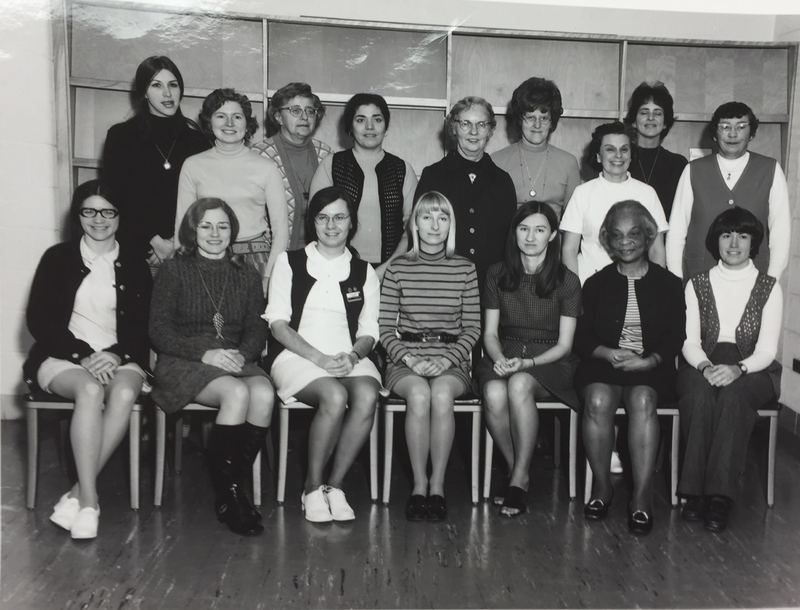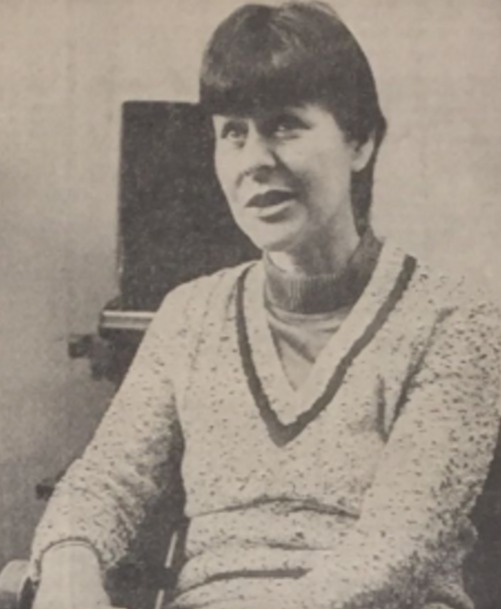Struggles Faced by Women Faculty
Lilian Wychoff Johnson, who graduated Michigan in 1891, wrote, "At the Senior reception, Prof. Hudson said, 'If you were only a man I'd ask you to come back as my assistant in History next year.'"1 In 1990, women faculty made up only 9% of the tenured professors employed at the University. Women of color made up only 1%.2
Women professors at Michigan have perhaps faced even more uphill battles than women students at the University. Women were excluded from the faculty uniformly in the early years, though in 1877 Louisa Reed Stowell became an assistant in microscopical botany.3 By the 1890s there were a small number of women teaching staff, all working at low level positions. Dr. Eliza Mosher was the first woman to be given a full professorship as a professor of hygiene, but her appointment was contingent on the fact she was becoming the first Dean of Women for the University.
This early lack of women professors was not for lack of trying on the part of many educated women and alumnae. In 1891, women alumnae proposed that they be allowed to raise money to pay for the salaries of any women appointed as professors, but the regents rejected this proposal.4 This was a pattern that persisted at the University as roadblocks were thrown up in front of appointing women even when funds were provided for that exact purpose. The Alice Freedman Palmer Professorship, which began in 1957, was meant to create an appointment for a tenured woman professor in the Department of History. University lawyers however, decided that appointments could be made without tenure and the position instead was used to invite historians to serve as visiting professors.5
The history of women professors at the University is a story of surprisingly late dates and empty promises. In 1964, Norma Diamond was hired as the first woman professor in the Anthropology Department. After one of her first lectures, a male student approached her and said he never would have signed up for the class had he known the professor was a woman.6 The first women professors in the Law School were appointed in 1970.
After the HEW complaint in 1969, Nellie Varner was appointed the head of an affirmative action committee. In 1974 she spoke about the University’s failure in hiring more women professors saying, “I’m disappointed by the effort being put forth, at the pace we’re going now, we will not meet our projected goals.”7 In 1994, due to the University’s abysmal efforts to hire and retain women of color faculty, the Women of Color in the Academy Project was launched, aiming to connect women of color faculty across campus to alleviate feelings of isolation.8
In 2002, Mary Sue Coleman was appointed the first woman President of the University. By 2015, women made up only 36% of tenured professors at the university, while they made up 62% of the total teaching staff at the University.9
1. Lilian Wychoff Johnson, “Lilian Wychoff Johnson Survey,” n.d. Box 109, Michigan University Alumni Association, Bentley Historical Library, University of Michigan.
2. Climate and Character: Perspectives on Diversity. Ann Arbor, MI: University of Michigan, 1997.
3. Ruth Bordin, Women at Michigan: The "Dangerous Experiment," 1870s to the Present (Ann Arbor: University of Michigan Press, 1999), 31.
4. Ibid, xxviii.
5. Ibid, 49.
6. Laura Berman, "Women Profs: Now Accepted but Not Yet Part of the Gang."Sunday Magazine, December 8, 1974.
7. Ibid.
8. Jeanne E. Miller, A Matter of Fairness: A History of the Center for the Education of Women at the University of Michigan (Ann Arbor: Bentley Historical Library, 2014), 36.
9. IPEDS Survey Part G, https://tableau.dsc.umich.edu/t/UM/views/IPEDS/PartG?%3Aembed=yes&%3Atoolbar=top


